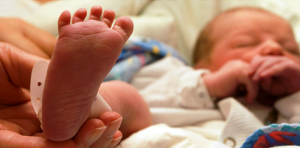Pes planus
Pes planus (flat feet)/Over pronation
Flat feet is a common term used to describe feet that pronate or roll in too much at the ankle joint and midfoot. When the foot pronates, the arch lowers.
Pronation is a normal foot movement and is needed for normal foot function in walking and running. However, if the foot pronates too much or at the wrong time it can lead to lower limb injuries. Activities such as running can place up to 3-4 times your body-weight of force on your feet.
Flat feet are relatively normal in infants. Babies are born with the appearance of flat feet when they are standing due to their increased fat in this area. However as they grow and their foot muscles strengthen with weight bearing activity (walking), most children eventually outgrow the flat feet. If your child continues to have excessive “rolling – in” and does not develop arches by 8 – 10 years of age, it may lead to problems in the future.
Causes of flat feet
Flat feet may be due to the structure of the bones, muscles and/or ligaments of the foot. Some of the main causes of flat feet include;
- Hypermobility (increased flexibility/loose ligaments) – Joint hypermobility is quite common in childhood, affecting 5% to 15% of school children. Ligaments support joints. If ligaments are loose/flexible it causes the arches to collapse and ankles to roll in under the child’s body weight.
- Obesity – increased weight can place increased stress on the feet causing the arches to collapse.
- Biomechanical factors – leg length discrepancy.
- Pregnancy – Women can experience flat feet during pregnancy due to the increased weight and increase in the Relaxin hormone causing ligament flexibility.
Treatment of flat feet
A comprehensive podiatric assessment is recommended to prevent the progression of symptoms and ensure appropriate treatment is undertaken. At Sydney Foot Clinic, the following treatment options are performed for flat feet;
- Determining the cause of your flat feet and performing a biomechanical assessment.
- Footwear advice – specific shoes that offer the appropriate support and are most appropriate to your age and activity levels.
- Prescription of custom made orthotics – orthotics are designed to guide the posture/mechanics of the foot to a help the muscles and tendons to perform more efficiently.
- Exercise programs – stretching and strengthening of tight and weak muscles are given to help with ankle stability, balance and range of motion.

